
Microalbumin Creatinine Ratio, Spot Urine
Microalbumin Creatinine Ratio, Spot Urine
A microalbumin creatinine ratio, spot urine test is used to determine whether your urine sample contains very small amounts of the protein albumin. One of the initial indications of kidney disease may be small amounts of albumin in the urine, also known as microalbumin. Early detection of kidney disease allows for treatment before the disease worsens.
The main protein found in blood is albumin. When healthy kidneys remove waste from your blood, little filters stop large albumin molecules from leaving your body with urine. Typically, only a tiny amount of albumin or none at all will pass through the filters. Larger amounts of albumin may pass into your urine if your kidneys are compromised.
Creatinine is a typical waste product found in urine and is a result of daily muscle wear and tear. A microalbumin creatinine ratio test evaluates the ratio between the albumin and creatinine levels in your urine. The amount of albumin in your urine can also be determined more precisely using this test. Thus, getting this test done is recommended for screening and diagnosis of kidney disease.
The test uses a single urine sample, also referred to as a "spot" sample to measure albumin and creatinine. A chemical byproduct of regular muscle activity called creatinine is normally excreted from the body through urine. This albumin-to-creatinine ratio test is an alternative method to determine your total daily urine albumin level without collecting a complete 24-hour urine sample because total daily creatinine production is generally consistent.
This test is also known as ACR, Microalbumin-Creatinine Ratio, UACR Albumin-Creatinine Ratio
Symptoms of kidney damage
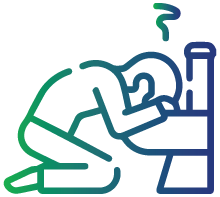
Nausea and vomiting

Loss of appetite

Fatigue

Sleep problems
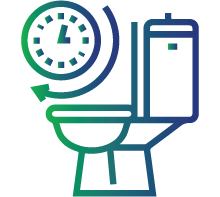
Urinating more or less
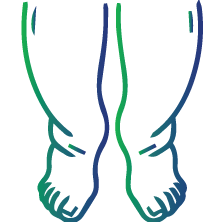
Swelling of feet and ankles
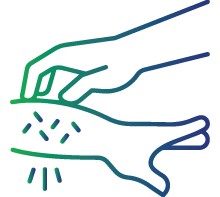
Dry, itchy skin
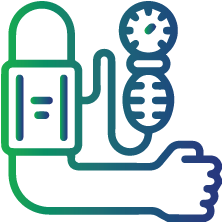
High blood pressure
Who should get tested?
A microalbumin creatinine ratio, spot urine test is recommended for adults who have one or more of the following risk factors for kidney disease
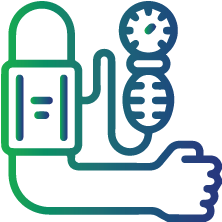
Having high blood pressure

Having a family history of chronic kidney disease

Being obese

Smoking cigarettes

Having cardiovascular disease

Belonging to a particular race or ethnicity
Preparation for the test
Ensure your doctor is aware about what prescription drugs, over-the-counter medicines, or dietary supplements you are taking. Refrain from eating meat for a day before your microalbumin creatinine ratio test as meat can affect your creatine levels. Ask your doctor for details about pre-test preparations, and make sure to follow instructions closely
Interpretation of results
The units of measurement for the results are milligrams (mg) of albumin per gram (g) of creatinine
|
Protein |
Normal range in urine |
|
Albumin: Creatinine ratio (ACR) |
0 to 30 mg/g |
Deviation from normal levels indicates the following:
· ACR levels less than 30 mg/g is considered normal.
· ACR levels between 30 to 300 mg/g might be indicative of early kidney disease.
· ACR levels of more than 300 mg/g might be indicative of more advanced kidney disease
FAQs
How is the sample collected for a microalbumin creatinine ratio, spot urine test2. What are the risks involved in a micr?
A urine sample is used for this test. You will be given a sterile container by your healthcare provider to collect a urine sample. A urine sample may need to be provided at a specific time.
Midstream urine collection is the proper technique for taking a urine sample. The first few urine drops should be discarded because they could contain microorganisms that are present on the genital surface. It is advised that you clean the area around your genitalia before taking a urine sample
2. What are the risks involved in a microalbumin creatinine ratio, spot urine test sample collection?
Urine sample collection for microalbumin creatinine ratio, spot urine test does not pose any risks
What is the turnaround time (TAT) for the result of a microalbumin creatinine ratio, spot urine test?
What factors can affect the microalbumin creatinine ratio, spot urine test results?
Factors such as exercise, inflammation in the body, fever, and specific medications can all temporarily raise albumin levels
What happens in the case of abnormal microalbumin creatinine ratio, spot urine test result?
Typically, you will undergo two additional tests in three to six months following your initial test. Your kidney disease may be in its early stages if two out of three tests reveal abnormally high levels of albumin in your urine. Your doctor will usually order additional kidney tests if your test result is abnormal, like an estimated glomerular filtration rate (eGFR) blood test to evaluate the status of your kidney’s health
Related tests
Albumin, Serum
₹ 220-
Includes
1 Test Parameter(s)
-
A serum albumin test examines the amount of albumin in the body. Albumin is a protein that is made by the liver. The serum albumin test is done as a part of the routine check-up and can aid in diagnosing liver disorder, kidney disease, malnutrition, unintended weight loss, and chronic kidney disease, as lower albumin serum levels increase the risk for CKD progression.
Creatinine Clearance Test
₹ 500-
Includes
1 Test Parameter(s)
-
The creatinine clearance test is used to determine the kidney's ability to remove creatinine from the blood. Creatinine is a waste product produced by the breakdown of muscle tissue. Creatinine is cleared from the body by the kidneys, and filtration of creatinine in each minute from the blood is called creatinine clearance. If the kidney is not functioning normally, there is an increase in the creatinine level in the blood because less creatinine is excreted through the urine. Creatinine clearance (CrCl) is used to evaluate the glomerular filtration rate (GFR) and assess renal functions such as kidney obstruction, acute or chronic renal failure, and dysfunction due to diseases like heart failure. This test also helps in the diagnosis and monitoring of the progression of kidney disease.
Creatinine/Estimated Glomerular Filtration Rate (eGFR)
₹ 250-
Includes
1 Test Parameter(s)
-
The estimated glomerular filtration rate (eGFR) is a test evaluate kidney function and determining es your stage of kidney disease. Your kidneys have tiny filters called glomeruli. These filters help in the removal of waste and extra fluid from the blood. A GFR test calculates the amount of blood that flows through these filters each minute. A GFR may be assessed directly, but it is a difficult procedure that requires the services of professional providers. As a result, GFR is frequently calculated using a test known as estimated GFR or eGFR. To get an estimate, your provider will use a method known as a GFR calculator. A GFR calculator is a mathematical formula that predicts the filtration rate. This is accomplished by comparing the results of a blood test that detects creatinine, a waste product filtered by the kidneys, with other data such as age, weight, height, and gender. A GFR test is used for the early detection of kidney disease when it can be treated. GFR may also monitor people with chronic kidney disease (CKD) or other conditions that cause kidney damage, such as diabetes and excessive blood pressure.
Blood Urea Nitrogen (BUN)
₹ 240-
Includes
1 Test Parameter(s)
-
The kidney removes waste and extra fluid from the body, and urea nitrogen is one such waste product. If an individual has kidney disease, this waste material can accumulate in the blood. Hence this test is used to evaluate normal kidney function. If BUN levels are higher than normal, this may be a sign of kidney dysfunction. This test can help to diagnose or monitor a kidney disease or disorder. This test is prescribed for individuals with a family history of kidney problems, diabetes, high blood pressure, and heart disease.
Tests At Lupin Diagnostics
Microalbumin Creatinine Ratio, Spot Urine
₹ 650-
Includes
1 Test Parameter(s)
-
The urine microalbumin creatinine ratio, also known as uACR, is a simple and convenient test to measure the albumin to creatinine ratio in urine. The test provides more accurate information about amount of albumin released into the urine to screen for kidney disease. Albumin to creatinine ratio in urine – a type of protein, to creatinine – a waste product found in the urine. High albumin levels in urine may indicate kidney disease, and low levels might indicate the presence of infection or inflammation. The test is crucial as it helps detect kidney problems early and assists doctors in preventing further kidney damage. The test is also recommended in patients suffering from type 1 and 2 diabetes or hypertension to check for kidney damage
Microalbumin, Spot Urine
₹ 600-
Includes
1 Test Parameter(s)
-
A microalbumin-spot urine analysis test detects minute amounts of albumin, a blood protein, in urine. Albumin is one of the proteins that leak through the kidney into the urine in cases of kidney damage. The presence of microalbumin in urine can be an important marker for risk of heart diseases and kidney damage in diabetes mellitus.
Microalbumin, 24 Hours Urine
₹ 600-
Includes
1 Test Parameter(s)
-
Microalbumin 24 hours urine test is used to detect very small levels of albumin in your urine. Albumin is a protein present in the blood. Kidneys filter out waste from the blood while retaining beneficial elements, such as albumin proteins. The damaged kidney can leak protein in the urine (proteinuria). Hence, a microalbumin test is used to detect kidney damage. This test is also prescribed for people with a higher risk of kidney diseases, such as diabetes or high blood pressure.
Creatinine Clearance Test
₹ 500-
Includes
1 Test Parameter(s)
-
The creatinine clearance test is used to determine the kidney's ability to remove creatinine from the blood. Creatinine is a waste product produced by the breakdown of muscle tissue. Creatinine is cleared from the body by the kidneys, and filtration of creatinine in each minute from the blood is called creatinine clearance. If the kidney is not functioning normally, there is an increase in the creatinine level in the blood because less creatinine is excreted through the urine. Creatinine clearance (CrCl) is used to evaluate the glomerular filtration rate (GFR) and assess renal functions such as kidney obstruction, acute or chronic renal failure, and dysfunction due to diseases like heart failure. This test also helps in the diagnosis and monitoring of the progression of kidney disease.
BUN/Creatinine Ratio
₹ 220-
Includes
1 Test Parameter(s)
-
Blood Urea Nitrogen (BUN) and creatinine test measure the amount of nitrogen and creatinine in the blood. This test can help diagnose or monitor acute or chronic kidney disease or disorder. A healthy kidney naturally filters out BUN and creatinine from the blood via urine. Increased BUN and creatinine level in the blood indicates that the kidneys are not functioning properly. High creatinine levels and the BUN-creatinine ratio may indicate acute kidney injury or dehydration. Because of decreased muscle mass, elderly patients may have an elevated BUN/Cr at baseline, congestive heart failure, or recent onset of urinary tract obstruction may also cause an increase in BUN/Creatinine ratio. Hypercatabolic states (excessive metabolic breakdown of complex substances such as protein), high-dose glucocorticoids, and resorption of large hematomas (blood that leaks into surrounding tissues will be reabsorbed into blood vessels) cause an increase in BUN relative to creatinine. Increased urea formation also increases the ratio, e.g., gastrointestinal bleeding, trauma, etc. Decreased formation of urea are seen in liver disease, leading to a decrease in the BUN/Creatinine ratio

